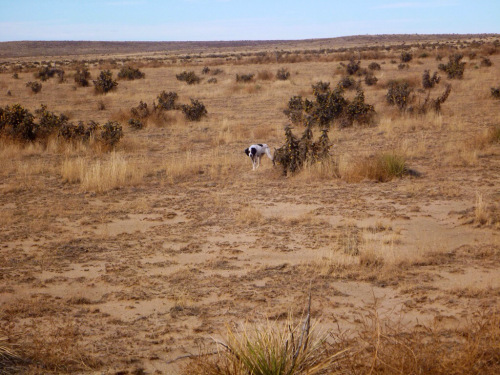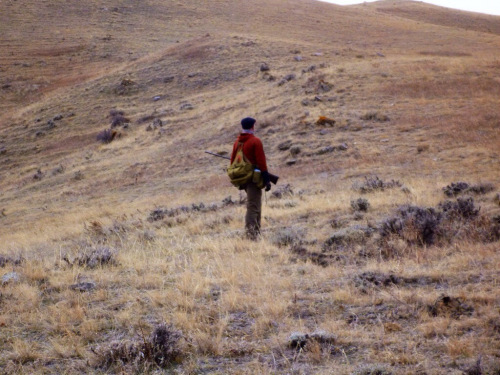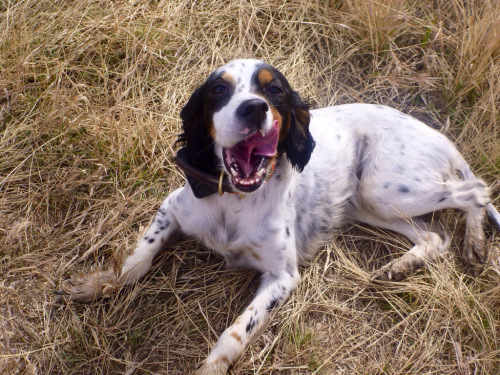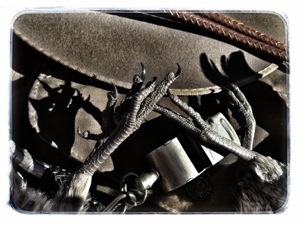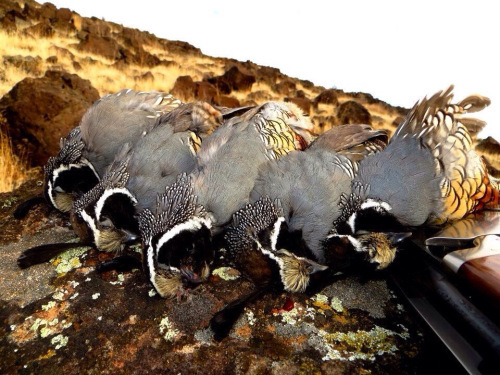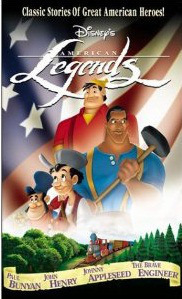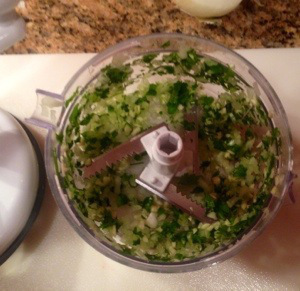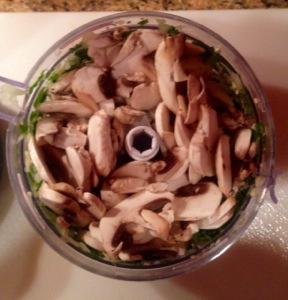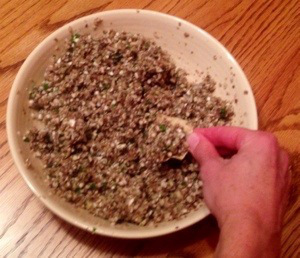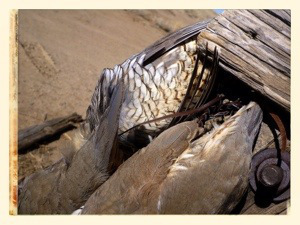Andrew Marshall Wayment's Blog, page 16
November 25, 2013
COVERS OR COVERTS?
With upland game hunters, there is always a question (I wouldn’t call it a debate) on whether to call our favorite hunting spots “covers” or “coverts.” I’ve always preferred the word, covert, but wasn’t sure why until just recently.

The entrance to one of my favorite coverts, Grouse Rock.
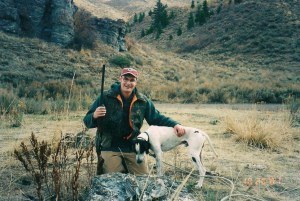
A banner morning at Grouse Rock.
For me, the word cover has always meant the actual vegetation the birds use for food and protection. When a place looks like it might hold birds, I’ve often said, “Man, that looks like birdy cover.” Whereas, the word,covert, has come to mean those secret places where I have reliably found birds in the past. In other words, a location is not a covert until the dogs and I have found some birds therein.
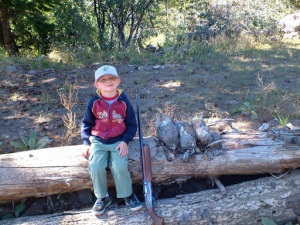
One of my favorite days of hunting ever with Tommy on Grouseketeer Ridge.
In his book, A Grouse Hunter’s Almanac: The Other Kind of Hunting, Mark Parman does a great job capturing the distinction between the two terms:
Referring to their spots, grouse hunters use cover and covert interchangeably, as if the t made no difference. Cover is the place where animals, people included, can hide, a place offering protection and food, which in the case of grouse means the tangle brush hunters must contend with, the thickets that rip off hats and bloody dogs. It’s the flora every grouse hunter must learn to read: those patterns of brook and tag alder, the edge covers where popple meets red oak, the thorn apples way back by the river just past the marsh grass and aspen aged to perfection.
. . . .
Covert, however, means “marked by concealment, hidden, secretive.” To the grouse hunter a covert conceals birds, and if it happens to conceal a lot of birds, hunters get covert (a sometimes difficult task in a state where most of the grouse and woodcock hunting takes place on public ground). We get abnormally possessive about our coverts—we name them, we start calling them ours, and then we get mad when someone else hunts there. In our minds we “own” them. . . .
No doubt, we grouse hunters are very secretive and protective of our coverts for all those reasons.
May I suggest, however, another reason for the use of the term by some grouse hunters? To introduce this, I want to share a quote from Charley Waterman from Hunting Upland Birds about ruffed grouse hunters:
The tradition of the American ruffed grouse has been abuilding for three hundred years and has grown mainly in the Northeast, where the ruff may not be plentiful as elsewhere but it is sought by the cream of upland hunters with fine guns, tireless legs, and love. . . . They also write endless of it, buy each other’s books, and refuse to compare it with any other game. An outsider like me might enjoy poking a little fun at their devotion, but I am engrossed in almost any ruffed-grouse literature I find, having read Frank Woolner’s Grouse and Grouse Hunting three times, and envy them their lifetime contact with the bird. Their attitude is one of unabashed sentimentality (rife among many upland gunners anyway), and it would be pleasant to be one of their cult. My principal object of sentimentality is the Wilson’s snipe, in which I seem to be nearly alone, and if ruffed-grouse shooters will be nice to me I will be nice to them.
This is classic Charley Waterman. Wilson snipe? He definitely marched to the beat of his own drum! As an admitted outsider-looking-in, Waterman compared grouse hunters to members of a cult with a religious-like zeal. And I think most Brush Worns would not disagree with this assessment, which leads to my point.

The Wayment Brothers at the Royal Macnab, our all-time favorite covert.
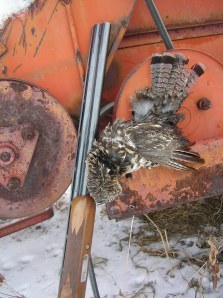
December ruffed grouse from the Royal Macnab.
The other day I was reading in the Bible (yes, I do this regularly) and came across the following scripture: “I will abide in thy tabernacle for ever: I will trust in the covert of thy wings.” Psalms 61:5. The word covert instantly leaped out at me. Before this, I did not realize that this word appeared in the Bible. After reading this, however, I found that covert is used a total of nine times in the King James Version of the Bible and, in each reference, the word connotes a place—oftentimes sacred—of hiding, protection, or refuge.
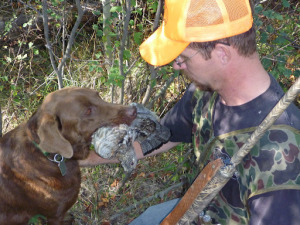
My good friend Scott with a ruffed grouse from a covert named, Grouse Alley.
With this religious connotation in mind, I submit that many grouse hunters—including myself—use the term covert because they consider them as almost-sacred refuges where they resort to escape the stressful, workaday world and to commune with Nature and God, places where the miraculous just might happen. Grouse hunters are secretive and protective of their coverts because they do not want to “cast their pearls before swine” so to speak. In other words, they realize that, if others discover their coverts’ true worth, they might abuse, deplete, or destroy the very things that they love about them.
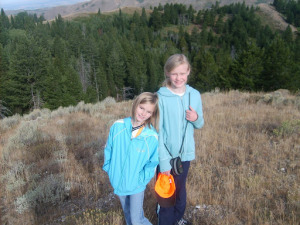
My daughter’s Emma and Nessy on Dusty’s Nub.
Pardon the cliché, but in my humble opinion, the term cover just doesn’t seem to cover it.

Andy and Misty Up on Top.
Author’s Note: Special thanks to Mark Parman for permission to use the quote from his excellent book. For those of you interested in purchasing Mark’s book, please follow this link: A Grouse Hunter’s Almanac: The Other Kind of Hunting.
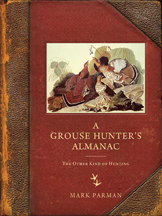
Mark Parman’s, A Grouse Hunter’s Almanac.


November 24, 2013
Over the Rivers and Out on the Prairies: A Pictorial Saga
As I sit here contemplating the holidays and the gunning season upon us, I can’t help but be thankful for the family and friends I have. I spent last weekend with Gary Thompson from Silk Lines & Paper Hulls blog near the Big Horns pursuing sharp-tailed grouse and huns in phenomenal country. Gary recently added a field bred English cocker to his mix. It was a riot watching Buddy and Ellie claw and rip-up the uplands. They found one nice covey of huns but we were swapping lies and not paying attention to our cocker dogs. Ellie took out after the covey and ran directly into the panel fence between us and the road…it reminded of me when I was in Idaho with PDJ author Tom Davis and Andy when Ellie ran head on with the guard rail at 10,000 feet. Man…is that dog hard-headed!
Mark Kastler and I left early the other morning to see how the Colorado prairies weathered and to move a covey or two of scaled quail. Anyone that knows me, knows how much I admire these birds. Scaled quail on the Kansas and Colorado prairie are my favorite to pursue with big running-pointing dogs. Mark and I met at our designated locale and decided we’d better grab a sandwich before traveling to the prairie. We finally got on the road but had to detour because of a fatality on the highway. We detoured and got onto the right path. We passed a nice covey of scaled quail on the road…this was of interest to us because we’d never seen scalies that far north. Mark and I agreed it was a good omen….and it was! We had an incredible day on the prairie moving several coveys of quail. The dogs had a fabulous day pointing and retrieving birds for Mark and I. A day to remember when I can no longer chase pointing dogs on wild birds.
Happy Thanksgiving to all my family & friends. I wish you all health and bird dogs on point!
Setter Feathers…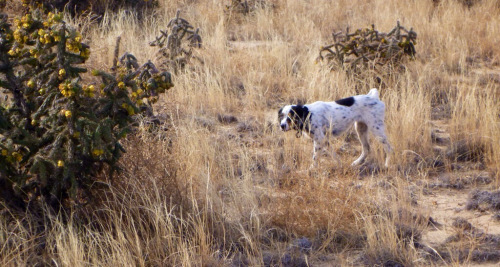 Gretchen on a covey
Gretchen on a covey
 Pair of scalies and an Open Road hat
Pair of scalies and an Open Road hat
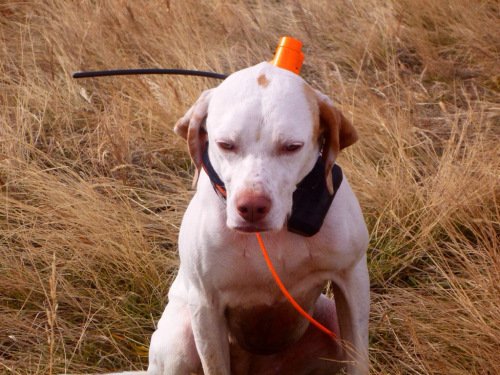 Lilly…please can I keep running?
Lilly…please can I keep running?
 Wyoming Hun/Sharp-tail country
Wyoming Hun/Sharp-tail country


November 22, 2013
A BETTER WAY
I recently reread Spiller’s Grouse Feathers and thoroughly enjoyed it. Spiller’s book got me thinking about my origins and progression as a grouse hunter. It seems every Brush Worn remembers that first bird taken on the wing. In fact, many writers have written about that seminal moment in their lives. I figured it was time that I recorded mine and some of the lessons I learned at the time.
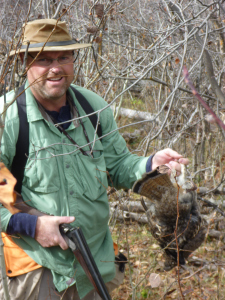
Brother Shawn and his red-phased ruff from Grouse Alley.
I didn’t start bird hunting in earnest until my first year of law school up in Moscow, Idaho in 1998. This year was a pivotal year in my life. I had graduated from undergrad in the Spring and had moved to Northern Idaho to attend law school. My love of the outdoors began to blaze and I was in a beautiful, game-filled area. At the same time, however, I really struggled with the negative law school environment and saw it as a battle of the survival of the fittest, which didn’t sit well with me.
In my book, Heaven on Earth: Stories of Fly Fishing Fun and Faith, I described my predicament:
. . . It only took reading a few court cases to open my eyes to the fact that, for the most part, the law was created because people are apt to do whatever they can—even taking advantage of their neighbor—to get ahead. Our legal system is so vast and complex because people do a lot of bad things to each other and the law has to cover all of the angles. My optimistic bubble was quickly deflating and the truth was depressing. I soon realized that I simply hated everything about law school and wondered what in the heck I had gotten myself into.
Instead of trying to fit in this negative environment, like a square peg in round hole, I withdrew. For me, there had to be a better way! Now bear in mind, I studied and went to class like other students, but as soon as class was over, I was out of there! I did not study or hang out at the school building or associate with other law students (except for a few close friends). I left school at school. Instead, that first semester, I devised a system in which I awoke at 4:00 a.m. and prepared for classes beforehand, which involved reading multiple cases and preparing outlines.
After class, however, I bailed out of the school as fast as my two legs would carry me, escaped to the great outdoors, and found much needed relief from the pressure. Moscow happens to be in the heart of the Palouse Prairie, which is a wildlife cornucopia. Unlike Southern Idaho, this highland prairie receives an average of 32 inches of precipitation each year and is known as one of the most fertile dry farm (no irrigation necessary) wheat producing areas in the nation. Indeed, this landscape is known for the rolling wheat fields as far as the eye can see. But for me, I sought out those areas that were untouched (or less touched) by the plow. The harvests that I was interested in were the abundant whitetail deer, elk, bears, pheasants, quail, ruffed grouse, blue grouse, Hungarian partridge, chukars, turkeys, and certainly not least, fish. I felt like a kid in a candy store and it was definitely hard to focus on school when this smorgasbord of outdoor goodness lay before me.
During this time, one of my favorite afternoon forays was hunting ruffed grouse, but I was not yet a Brush Worn. Before moving to Northern Idaho, I talked my dad into letting me bring his old Coast to Coast hardware store pump 12 gauge shotgun with me to law school, but I did not yet have a bird dog. Early that September, I hunted with Shawn and his pointer, Gibbs, in Deary, Idaho on some private property loaded with ruffed grouse. I vividly remember taking my very first grouse off of a tree limb. I was so excited to hold one of these beautiful birds in hand. I had no idea that this was not sporting. I was unaware of the deep tradition of hunting the ruffed grouse or of the ethics of true sportsmen. After all, the point of hunting seemed to be to bag your quarry, right?
The weeks that followed, many days after school, I threw my shotgun into the old rattle trap, Geo Tracker, and headed east to Deary, where I would walk the woods for a few hours in search of grouse, which were more plenteous that year than I have seen before or since. I had great success shooting sitting grouse that I found along cattle trails and abandoned logging roads. I felt like quite the hunter as the body count stacked up.

Some of my first grouse from 1998.
The more time I spent that semester in school, however, the more I cherished the peace of the outdoors. I recognized a stark difference between these two environments: The former was so stressful, negative, and chaotic and the latter was so peaceful and positive with an underlying order that appealed to all my senses. Soon the atavistic desire to kill and possess subsided some and I began to seek a new approach.
One of my very favorite areas to hunt that Fall was the University of Idaho Experimental Forest east of Moscow Mountain. The grouse were so plentiful that you couldn’t drive down the road in the afternoon without seeing numerous grouse right along the road. My favorite area to hunt, however, was along this trail that wound through some of the best grouse cover I can recall and the walking was easy. Over those weeks, I never went there without seeing and harvesting a few birds.
One afternoon in late September, as I walked this trail, I thought that it would be more of a challenge if I took one of these thunderous birds while flying. I realized that any oaf could take a bird sitting on the ground. As I walked toward a narrow clearing, I observed a ruffie flying low across the opening and I swung, shot and dropped the bird. As I picked it up, I can honestly say that I felt more pride in that one bird than all the others that I had taken home earlier that season. After that bird, I missed more grouse on the wing during law school than I can even begin to count and I gained a respect and love for Ol’ Ruff and his wiles that remains to this day.
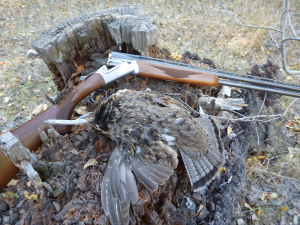
A gray-phased ruffed grouse.
As I wrote in my book, this coincidentally happened around the same time that my addiction to fly fishing took hold. I recognized fly fishing as a more challenging, graceful way than the bait fishing and hardware chucking that I grew up on. At the same time, I independently came to realize that wingshooting with bird dogs was definitely the more sporting way of hunting. I’m sure this was no mere coincidence, but why?
Burton Spiller said it best in his book Fishin’ Around: “I believe that the intimate contact with nature which all fisherman [and I would add bird hunters] enjoy works a change in the inner man, and makes of him a humbler and wiser person.” In other words, when we immerse ourselves in the great outdoors, Nature and Nature’s Creator can teach us that there is a better way, not only in hunting in fishing, but also in life.
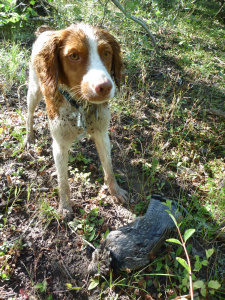
Misty’s first ruff of 2012.


November 19, 2013
THE GARAGE BAND
The classic scene in upland bird hunting has to be the dog quartering perfectly before the gunner with the bell around its neck tinkling as the dog works the cover. Bright light pierces through the forest canopy like the lights of a stage. As the dog hits the invisible thread of scent, her whole body wiggles in excitement with that unmistakable birdiness as the dog zeroes in on the source. Her choke-bore nose locates the source and her body stiffens with her nose thrust directly toward the invisible bird. The tail that once wagged like a child’s sparkler now sticks ramrod straight up. With a smile on his face, the gunner walks past his four-legged companion and kicks up a thunderous ruffed grouse, which presents an easy straightaway shot. The confident gunner smoothly mounts his gun, pulls the trigger, and the bird drops in a cloud of feathers. I like to think of such dogs and gunners as rock stars. The hunter is like Bono singing “Bullet the Blue Sky” and the dog and its work are like the Edge and the perfect riff.
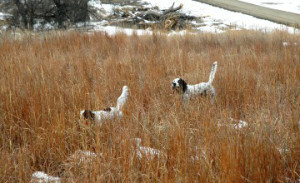
Picture perfect rock stars.
Unfortunately, this is not me and my Brittanies. We’re more like a garage band. Think of the Presidents of the United States performing “Lump” with their crunchy, three-stringed guitars.
Let me give you a few examples of what I mean from my journal.
On Thursday, October 10th, I wrote this about hunting ruffed grouse at my favorite covert, The Royal Macnab:
I decided to take Misty up to the treeline to try and find Ol’ Ruff. My goal was to hunt my way over to to this sweet little, quakie-choked finger of the furthest draw on the property that I had admired earlier. I hunted through the thick timber toward the draw, and though the fall colors were stunning, we found no birds. When I reached the far draw, I crossed over on this logging road that I had never been on before. Still no birds. When I reached the far draw and it began to narrow, Misty got birdy in a small quakie thicket. I thought I heard a bird flush, but didn’t see anything. However, Misty was looking up into the trees. I went down to her and looked for the silhouette of a ruffie in the trees, but could not see anything in the sea of golden leaves. I even shook a few trees but to no avail.
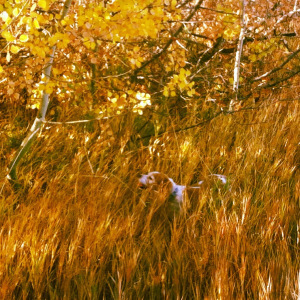
Sunny Girl points a ruffed grouse.
So I stepped out of the thicket above the draw to see if I could catch a glimpse of the bird Misty was sure was there. I still couldn’t see anything and was about to leave when Misty did something I’ve never seen her do before. She had observed me shaking the trees and she then put her paws up on this small quakie and barked and shook the tree. I knew something special was happening. I walked toward her. Misty jumped up and did it again and sure enough, Ol’ Ruff blasted down hill out of that little tree. I fired at the disappearing blur and watched my shot rip through the golden canopy as I swung the gun downhill. I felt good about the shot and even told Misty to hunt dead, “Dead bird!” We searched for about five minutes, but saw no bird or any sign that I had hit it. I was very pleased with Misty’s performance despite my poor shooting.
On November 2, 2013, my band mates and I had the following experience at a covert I call “the Outhouse” which admittedly seems kind of fitting for a garage band:
After our first few hunts, we decided to try the Outhouse Covert one final time this season. We hiked up the narrow road and right by the Outhouse, Misty bumped a grouse that I marked down. I followed its line of flight, but Misty, the turd, got to it first and bumped it again. This time, however, it flew into a tree. I tried to position myself for a good shot, but the harsh sunlight was blinding in the best location. So I stood to the right of the tree and threw a few sticks to try and make the grouse fly. After the third throw, the grouse flushed hard attempting to cross the clearing over the road. I raised the gun and pulled the trigger before the gun even hit my shoulder and was sure that I had missed. But to my utter amazement, the bird cartwheeled in the air and landed in the creek. Sunny Girl made a nice retrieve of a rare, beautiful red-phased ruffie. What a crazy, lucky shot!
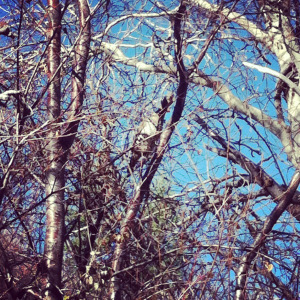
The ruff just before he exploded from the tree.
As these journal entries show, like the music of a garage band, sometimes hunting with my dogs is not pretty. However, it is usually exciting and fun. And in the midst of all that cacophony, we often find a tune where it all comes together and we get’r done. I guess we can’t all be rock stars, but that doesn’t mean we can’t still make music.
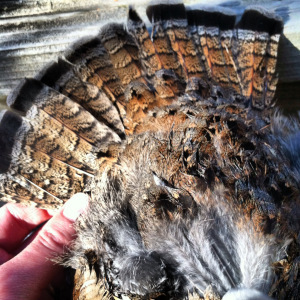
A red phased ruff is rare in Idaho.


November 17, 2013
THE FINAL WORD by DOUG DEATS
Today on the Bird Dogs & Fly Fishing Group on Facebook, one of our Members, Doug Deats, posted something that made me laugh out loud. If you don’t know Doug or his writing yet, you should and you will. Doug’s first book, Smoke on the Wind: Short Stories and Essays by Doug Deats is about to be published. I’ll be one of the first in line to purchase Doug’s book. We’re in for a real treat!
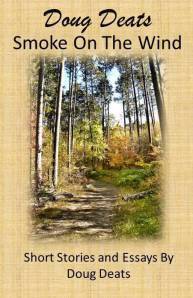
Smoke on the Wind by Doug Deats
With that said, I wanted to share Doug’s humorous post with the readers of Upland Ways with the caveat that those sensitive about their breed of hunting dog beware!
THE FINAL WORD
by Doug Deats
Every once in a while someone wanting to get the members of this group at each other’s throats will ask the lethal what breed question. Since it is obvious that when it comes to things dog and bird related my opinion is the absolute to which all others are relevant I would like to put this question to rest once and for all. I know, I know we English setter owners wonder how this question can even come up but the answer is it is about the evolution of dog owners and some of us are more evolved than others.

Doug’s English Setter.
When I first got in the dog business I did what everyone else does, I started with GSP’s. Now when it comes to bird work this breed is very easy to train and it’s a good thing because if you break for lunch you have to retrain all the males. But to be fair they are bird hunter to the tenth power.
Next I moved up to Britts. These dogs actually had some personality and you didn’t want to kill them after a rainy week in the house. They are sort of like a compact car; good on gas and easy to park down town but sooner or later you want a suv.
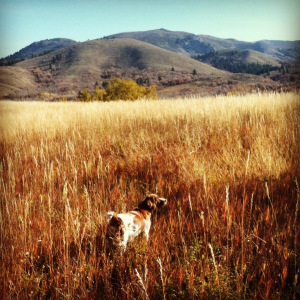
Misty pointing on the Royal Macnab.
I never fell into the English Pointer trap. Right off the bat I figured it out that you didn’t ever actually have to own one because any time someone dropped a pointer on the ground within five miles of you he would show up with you eventually and hunt for you for a while until he got bored or figured he’d put enough birds in your bag and moved on.
There are all kinds of breeds out there and most of them are for entertainment value and we in the know, smile knowingly. I am talking pointing dogs now as flushing dogs take their work seriously and if they were to read this I could do lasting psychological damage.
Now let me give you an example of what I mean by entertainment value. I have a mountain man friend who had a worldwide reputation for having the best treeing walker coon hounds. His name is Morgan Turner and any of you who were into coon hounds in the late seventies and early eighties know who I mean. I got him into bird dogs and gave him a vizla. One day as a joke he entered her in a coon hound event. He told them she was a Red Bone that got her tail slammed in a tailgate. She took the trial hands down and since it was an unsanctioned trial Morgan never told them the truth. This is actually a true story but anyone who tells you a bigger story than this is definitely lying to you.
I would like to take a minute and clear up the misconception that the German wirehaired pointer is a bird dog. They are not. They are a sub group of the scientific group foreryestis-wisosis; common name woods wizards. They along with elves, some trolls, pixies, woodland fairies, true wizards, the greater wizards, the lesser wizards and the Wayment brothers are born to haunt the forests.
This brings us to the obvious conclusion that just as the ruffled grouse is the king of game birds the English setter is it when it comes to pointing dogs. I hope this clears things up and we can put this topic to rest.
I hope you enjoyed that as much as I did! This post created a firestorm of good-natured banter on the various breeds of gun dogs on the Bird Dogs & Fly Fishing Facebook group page. One member even called this the best post ever in the group. If any one wants to know where Doug really stands, however, below is a photo of his pack, so you owners of other bird dog breeds can call off the wolves. I’m sure that Doug never met a bird dog that he didn’t like.

Doug Deats and a few of his varied dogs.
For those of you interested in reading more of Doug’s stuff, here is a link to his website: http://www.dougdeats.com/. I plan to review his book on Upland Ways and will keep you posted. So stay tuned!
Also, if you haven’t yet joined the Bird Dogs & Fly Fishing Group on Facebook, look us up and ask to join. It has been a fun ride getting to know so many other like-minded individuals like Doug Deats. You will not regret it!


November 16, 2013
UPLAND HUNTING ALASKA BY JIM MCCANN
The first time I heard of Jim McCann, I was watching an episode of American Gun Dog with Harley Jackson who was hunting for late season ptarmigan with Jim McCann in interior Alaska. Harley described Jim as a “real Renaissance Man.” I thoroughly enjoyed this episode and was impressed with Jim’s Brittanies and the country they hunted. After all, upland hunting in Alaska has been on my bucket list for a long time.
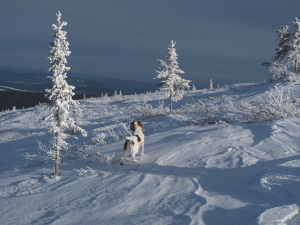
McCann’s dog, Charlie, pointing willow Ptarmigan in Interior Alaska.
For me, social media is both a blessing and a curse, a curse because I waste so much time when I could be doing more productive things (like hunting, fishing, writing on this blog or writing another book) and a blessing because I have met some awesome people that I would not have otherwise met. Jim McCann is one of those people. I met Jim through a group Shawn and I started on Facebook called “Bird Dogs & Fly Fishing,” which is a fun group where bird-doggers and fly fishers come together and share stories, photos, recipes, artwork, writings, etc. In this group, we try to keep things positive and upbeat and the members have been just great. If you haven’t checked us out on Facebook, look us up and ask to join.

Jim McCann with the bird of his heart, Ol’ Ruff.
I first became acquainted with Jim through his great photography that he regularly posts on Bird Dogs & Fly Fishing, which include pictures of upland hunting with his Brittanies in Alaska. From his posts, I gathered that Jim loves Brittanies, and loves to hunt the noble ruffed grouse and sharptails, definitely a man after my own heart. As I’ve come to know Jim a little more, I have learned that he is an excellent photographer, a freelance writer, and the author of the excellent book, Upland Hunting in Alaska, which Jim graciously allowed me to review.
At the outset, I want to state that I am generally not a big fan of Where-to/How-to books. As I read Jim’s book, however, I quickly realized that this book cannot be pigeon-holed into that category. It is so much more! This really is the story of an avid grouse hunter and his bird dogs who happen to live and hunt in Alaska. While the book is packed with useful information for someone desiring to bird hunt Alaska, for me, the value of the book was the stories that Jim tells of his dogs, the grouse, their hunts, and the beautiful, wild landscape they traverse.
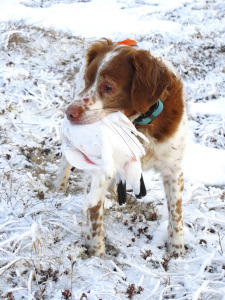
Rusty with a Rock Ptarmigan.
If I could sum up Jim’s book in one word, I would describe it as “Brush Worn.” For those of you who are not familiar with the term, a “Brush Worn” (as coined by the late George King) is someone who lives for the pursuit of the ruffed grouse with bird dogs and double guns in the Fall. Anyone who loves the ethical pursuit of the ruffed grouse will enjoy this book. It’s full of secret coverts, stanch dogs, successful and miffed shots, miraculous retrieves, and banner days afield. However, Jim’s book adds a few options to the grouse hunter’s menu including sharptail, ptarmigan, and spruce grouse.
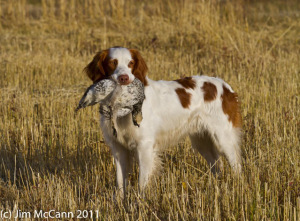
Charlie with a plump Alaska sharptail.
I truly enjoyed the stories of Jim’s Brittanies, Charlie, Buddy, and Rusty hunting grouse in Interior Alaska and related to his “MVD” award, which is the “Most Valuable Dog” award that he silently gives to the dog who hunts the best for the day. For Shawn and I, we call it the “A Team” and its always fun to see which dog makes the cut for the day. I laughed out loud when I read that Jim had calls his 16 gauge side-by-side “Arctic Cockatrice” because “it has served [him] so well.” I’ll just remind Jim that pride goeth before the fall! As a father of six kids, I think my favorite stories were of Jim taking his daughter, Haley, hunting. On her first hunt, Jim takes a true double on spruce grouse, and afterwards Haley declares: “Daddy, you and me. We’re huntin,’ fishin,’ and horse ridin’ fools!” I could relate because some of my favorite memories are with my own daughters. And who can forget the chapter of the time Haley got her first grouse on the wing and the earth shook? Good stuff, my friend!
I read this book twice before preparing this review and honestly enjoyed it as much, or more, the second time. I have no qualms whatsoever with highly recommending it to the readers of Upland Ways. It truly solidified for me that before I kick the bucket, I must hunt birds in Alaska. And if Jim lets me and my Brittanies tag along with him to some of his secret covers, all the better. Harley Jackson got it right: Jim McCann is a “Renaissance Man.”

Rudy, the new kid on the block, retrieves a sharptail.
Author’s Note: Special thanks to Jim McCann for permission to use the photos herein.


November 15, 2013
Idaho Chukar Foundation, INC
History of Idaho Chukar Foundation, Inc.
By: Drew Wahlin, President & Professional Chukar Hunter
idahochukarfoundation@hotmail.com
Facebook: idahochukarfoundation
Meridian, ID
Fall 2013
Founder Drew Wahlin researched starting an Idaho Chukar Foundation for over 5 years. Currently Idaho has the best chukar/hun hunting/populations in the world! The driving force for his conviction to conserve/preserve/sustain Idaho’s upland game birds was “his” lack of taking action for Idaho’s future generation of sportspeople when Idaho had one of the world’s best wild pheasant populations back in the early 70s. He hold himself accountable for not having a conservation vision on the long-term preservation of Idaho’s pheasant, so now he has to endure the 2 day drive (4 days round trip) to the Dakotas for quality wild pheasant hunting. One only has to walk the halls of the Sun Valley Lodge to see what the pheasant hunting was like in Idaho during the 40s, 50s and 60s (photos of Bing Crosby, Ernest Hemingway, Gary Cooper, etc. all hunting Idaho’s wild pheasant). Heck, for that matter he could drive down to Johnny Store (old ID Hwy 93) from Ketchum and get a limit (3) of pheasant and a few huns in less than an hours time still in the 70s.
Several years ago he contacted the Nevada Chukar Foundation (NCF), Utah Chukar & Wildlife Foundation (UCWF), and the Carson Valley Chukar Foundation (CVCF) to gain some background on their organization and to start a relationship for the development of a similar group in Idaho.
The NCF has been extremely successful in their 25 years of fundraising (raising about $250,000+/year, and an endowment of almost $1,000,000) and development of a major increased in NV’s chukar/wildlife populations over the past 25 years of their operation. ICFI has a long ways to go to achieve what NCF/UCWF/CVCF have accomplished.
ICFI received its IRS Non-profit 501c3 status in September 2012 which took over a year to obtain. ICFI presently has 5 Board Members from around the state to set its policies and direction. ICFI’s Statement of Purpose is to maintain the world’s best wild chukar/hun bird hunting and populations with the following actions:
•An all volunteer organization that is focused on maintaining large populations of Idaho’s upland game birds throughout their Idaho range.
•To create an ongoing economic benefit to Idaho’s rural economies.
•To establish ICFI as the voice of creditability on: obtaining and maintaining high quality scientific data; working towards long-term hunting regulation policies; and establishing long-term (50 years) strategic management of Idaho’s upland game birds.
•Encourage wise use of natural water resources to maximize the benefit for wildlife around those areas.
•Promote the sage administration of wildfire and range habitat management best practices.
•Promote cooperation between state, federal, other conservation groups, and private organizations for the purpose of sustainable long-term wildlife and habitat management in Idaho.
Bio Drew Wahlin
Drew Wahlin, Founder, Director, President & Professional Chukar Hunter, has been an avid bird hunter for over 50 years and has been hunting upland birds in Idaho for over 40+ years. He started hunting chukars/huns for cross training as a professional athlete (freestyle skier) while living in Ketchum, Idaho and became a passionate upland bird hunter/wildlife advocate. He’s a published national upland bird hunting author. He enjoys double guns, gun dogs, and climbing the rugged/steep mountains of Idaho’s chukar habitat. He is a professional “conservation” chukar hunter (hike more, shoot less), hunting upland birds in the states of Alaska, Arizona, Idaho, Montana, Nevada, North Dakota, Oregon, South Dakota and Washington. He runs a big running Miller English Pointer named Jake.
Drew has worked for the past 35+ years with publicly traded companies and closely held corporations within senior executive management. His areas of practice have been in executive management, business development, corporate finance, strategic planning and marketing/sales management. He currently is the Managing Principal of Idaho Consulting International, Boise, ID, an international business management consulting firm specializing in strategic planning, capital formations and business valuations. He has been president/CEO/board member/owner of a multitude of small businesses and was a vice president/officer in a Fortune 100 multinational company. Drew has held university faculty positions at three universities, teaching in the areas of accounting, entrepreneurship, sales and marketing.
Drew has served on the boards of publicly held companies, and acted as the Chairman of Audit Committees and as a member of Compensation Committees working within the investment banking community and alongside national accounting/law firms. For several years he wrote a weekly Sunday Edition business column for the state’s newspaper-Idaho Statesman, and he was a contributing writer to the former monthly regional business publication-Venture Magazine. He was one of the founding members of the Intermountain Venture Capital Forum. Drew received his B.A. summa cum laude at the University of California, and his M.B.A. and B.B.A.-Accounting Ellery Capen Scholar from the University of Puget Sound. He is a former Certified Public Accountant and Member of the PGA. He a Member of the Pioneers of Freestyle Skiing, US Ski and Snowboard Hall of Fame.


November 12, 2013
GROUSE AND APPLES
As a young kid, I always loved the story of Johnny Appleseed and the Disney cartoon on this American legend, especially the song:
Oh, the Lord is good to me
And so I thank the Lord
For giving me the things I need
Like the Sun and the rain and the Appleseed.
The Lord’s been good to me.
There was just something special about a man who felt it was his God-appointed calling to plant apple trees out on the frontier. And what’s not to love about apples? They are the quintessential fruit of Fall.
When I first started pursuing ruffies in Northern Idaho fifteen years ago, I never would have dreamed there would have been a connection between grouse and apples, but this was before I knew much about the rich history of ruffed grouse hunting. That fall, however, I repeatedly found grouse by an old apple tree near the crumbling cement foundation of a home long gone. I always thought that was a weird place for a ruffed grouse to be, given the fact that the nearest protective cover was about thirty yards away. However, the birds just could not resist the fruit of this tree even at the risk of their own safety (not from my poor shooting at the time, mind you). I soon learned to be on alert whenever we came across apple trees while hunting grouse.

I spy with my little eye . . .
As I later began to immerse myself in the literature of ruffed grouse hunting—especially from back east where the grand tradition began—I found that the books are replete with references to secret coverts consisting of abandoned homesteads that the forest has reclaimed, with rock walls and overgrown apple orchards that the ruffed grouse use for cover and food. Given my experience in Northern Idaho, I could relate to descriptions of such haunting, birdy places and desired to experience such coverts. I quickly realized that no matter where you hunt them, grouse and apples go together. Once I even met a grouse hunter from back east who has named all of his English setters after different kinds of apples, which I thought was very appropriate.
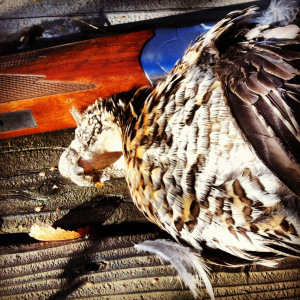
Ol’ Ruff.
Nowadays, I live in Southeastern Idaho and there are hardly any apple trees near the quakie-filled draws where I pursue ruffed grouse. However, for me, the connection still remains. As the apple is the quintessential fruit of this season, the ruffed grouse is the very essence of Fall: He is both beautiful and fleeting. Also, as the first hard frost comes, the apples around here take on crisp, sweetness that they did not have before. Likewise, hunting for Ol’ Ruff just gets better with onset of the cold. And lastly, I always carry a few apples in the pocket of my Filson game vest while I traverse the grouse woods. In fact, one of my favorite rituals is to take a seat on a downed tree with my smiling bird dogs beside me, to bask in the Indian summer sun, and to bite into a delicious homegrown apple. At such times, I’ve contemplated changing the words of the song to:
Oh, the Lord is good to me
And so I thank the Lord
For giving me the things I need
Like the Sun and the Ruff and the Appleseed.
The Lord’s been good to me.

The ruffed grouse is the very essence of Fall.

November grouse tracks.
Happy Thanksgiving to all of the followers of Upland Ways!
The birds are just the bonus!
Andy


November 9, 2013
Mushroom Salsa Recipe
Today was the opening of Colorado and Kansas’s quail and pheasant season. I texted my Kansas quail bum friend to see how it was going this morning because predictions for the season have been dismal. Quail Bum texted me back at noon central time “6 coveys found…total bag thus far 5 phez and 15 quail all bobs.” A joyous smile smirked across my face…now I’m gonna have to go to Kansas to chase Gentleman Bob! I stayed home to catch up on what? I’m not sure! Last night the wife and I went to see Gregory Allen Isakov with the Colorado symphony which was incredible. Bottom-line…I hate opening morning crowds. I’m going this week after scaled quail and can hardly stand the anticipation.
One of the things that I enjoy making is mushroom salsa. Every October when I travel home to Idaho, my family talks me into making it. They beg for it! It’s very easy to make. Karen and I figured out all the ingredients based on taste except for the seasoning at the local Mexican restaurant here in Castle Rock. One night I peeked around the corner to see a worker making the stuff and spied him adding Lawry’s Season Salt. I had it now!
Here are the ingredients: (you can add more or decrease the amount of ingredients based on your preferences)
Garlic 3 to 6 cloves
Cilantro 1/4 bunch
Sweet yellow onion two slices
Jalapeño pepper
Mushrooms chopped
Lawry’s Season Salt
Fresh limes
Places the garlic, onions, cilantro and pepper in the salsa maker and chop before adding the mushrooms. Slice the mushrooms and add the contents to a bowl you plan to eat out of. Spice with the season salt to desired taste and add at least two fresh squeezed limes to the salsa.
Bon appetite!
See ya on the Colorado or Kansas prairie….setter feathers


November 3, 2013
WHO IS THE BEST WRITER ON GROUSE HUNTING?
In October, Shawn and I had the opportunity to spend a week bird hunting in the uplands of Idaho with author, Tom Davis. If you don’t know, Tom Davis, is one of the finest writers on upland bird hunting now living. He regularly writes for The Pointing Dog Journal, Pheasants Forever, Sporting Classics and The Shooting Sportsman. While the bird hunting left a little to be desired, we enjoyed hunting with Tom and getting to know him a little better.
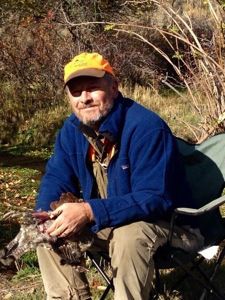
Tom Davis cleans an Idaho ruffed grouse. Tom is not only a great writer; he is a great hunter.
On the second day of our hunt, we took Tom to an area in Southern Idaho, I call,”Grouse Rock,” which is one of my favorite ruffed and blue grouse covers anywhere. However, unlike year’s past, the grouse were tough to find. The drought has hit the birds hard in Idaho this year. Tom and I hunted one quakie-filled draw in particular where the golden leaves radiated like a leprechaun’s pot of gold. It was simply breathtaking.

Tom Davis, Photographer John Loomis, and Andrew Wayment hunt grouse in Southern Idaho.
Since the hunting was slow, as a lover of outdoor literature, I asked Tom about some of his work that I had read, which was fun for this bird book nerd. Specifically, we talked about an article he wrote in PDJ about some of his favorite bird hunting books. I told him that I agreed that Steve Groom’s, Pheasant Hunter’s Harvest, is the finest book on pheasant hunting. He then reiterated that he felt this book was unjustly overshadowed by a inferior book on pheasant hunting (which shall not be named) which came out around the same time as Groom’s book. I’ve agreed with Tom’s statement since I first read Pheasant Hunter’s Harvest after reading Tom’s article in the PDJ.
Since we were in the grouse woods, I had to ask Tom the question, “Who’s writing do you prefer, Burton Spiller or George Bird Evans?” Tom quickly replied, “Burton Spiller, but, in my opinion, the best writer on ruffed grouse hunting was William Harnden Foster.”
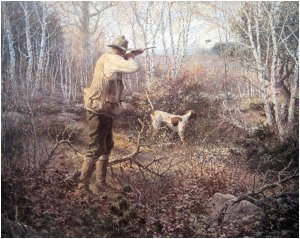
This beautiful painting by William Harnden Foster graces the cover of his classic book, New England Grouse Shooting.
Tom’s answer caught me a little off guard because I am a dyed-in- the-wool Burton Spiller fan and feel that he truly deserves the title, “The Poet Laureate of Ruffed Grouse Hunting.” Spiller’s timeless work speaks to me because–first and foremost–Spiller was a good man who happened to love to hunt ruffed grouse and had a knack for telling a great story. I would have loved to spend a day together in the grouse woods with Burton Spiller, which is not something I can say about every author I have read. Second to Spiller, I would place the late and great George King, the author of That’s Ruff!, who I had the pleasure of speaking with on the phone and corresponding with by email.
As for Tom’s answer, I own a copy and had read William Harnden Foster’s book, New England Grouse Shooting, and considered it as a truly exceptional where-to/how-to book (which admittedly is not my favorite genre), but I would not have placed Foster at the top of my list. Regarding his response, Tom went on to say that: “Everything that Foster wrote was spot on and is still true to this day.” For the most part, I had to agree with Tom on that point, although I stated, with a smile, as we watched my Brittany Misty hunt for grouse in the thick timber, that “Foster did not have anything good to say about my breed of choice.” Tom replied, “True, but at time pointers and setters were the top grouse dogs and little was not known about the continental breeds.” For those of you who don’t know, Foster specifically wrote about the Brittany: “Whatever the virtues of this breed may be, or what future fashion may dictate, the Brittany spaniel has not yet proved anything convincing enough to put him on the same basis for consideration with the setter or pointer. Furthermore, the upland gunner who can feast his eyes on a statuesque point demands that his bird dog have a tail.” Anyway, it was an interesting conversation about great authors while hunting with a truly great writer of our times.
About a week after our hunt with Tom Davis, I was checking Facebook and came across a link to an article on strideaway.com by Tom Davis entitled,”WILLIAM HARNDEN FOSTER.” Of course, after having this conversation with Tom, I was intrigued to read his article. Having now read this article, I can attest that Foster truly was an amazing, multi-talented individual. He was an artist, an editor, a field trialer, the inventor of skeet, a diehard grouse hunter, and a good man. I am glad that Tom Davis took the time to research and write this excellent article and to preserve this part of history that all grouse hunters should know and cherish. I now understand better why Tom Davis considers Foster the best writer on ruffed grouse hunting. In the future, I will read Foster’s book with a new perspective and appreciation. I encourage the followers of Upland Ways to check out this great article on an under-appreciated writer.
I would love to hear your thoughts on who is the best writer on grouse hunting of all times.
Remember the birds are the bonus!
Andy




